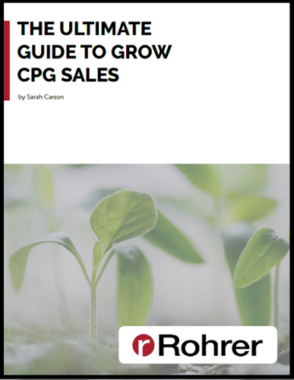 What happens when your consumer packaged goods brand is trying to launch a new product SKU or brand extension? How do you create connection and joy with consumers without leaving them with the regrets of dozens of missed opportunities? When the competition is as fierce as ever, how do you increase CPG sales?
What happens when your consumer packaged goods brand is trying to launch a new product SKU or brand extension? How do you create connection and joy with consumers without leaving them with the regrets of dozens of missed opportunities? When the competition is as fierce as ever, how do you increase CPG sales?
Our team prepared the ULTIMATE GUIDE to stand out on the retail shelf, and increase your CPG brand’s sales now and throughout the 2020’s. Download The Ultimate Guide to Grow CPG Sales now!
Learn how to:
- Create differentiation
- Capitalize on partnerships to overcome pressures on costs
- Increase market share and customer loyalty
- And MORE!
Download your copy now or start out with this preview:
Launching for Success
The key to CPG success moving forward comes down to one word: Differentiation. Launching a new product or sub-brand just to put something different on the shelf won’t cut it. Research points to three main challenges:
- Mass merchants fight SKU proliferation. As e-commerce continues to grow, mass merchants’ revenue has been flat or decreasing for the past five years. To combat or improve the trends, their strategies include reducing SKUs and inventory, and making stronger commitments to profitable private label brands.
- Consumers search for social connections to brands. Retailers prefer to feature brands at full price, and can do so when consumers feel connected to brands. Shoppers’ response to mass marketing is dwindling; there is not a one-size-fits-all campaign for a homogenous consumer group anymore. Millennial shoppers require a connection to brands. They are more likely to find one with small brands because of perceived authenticity. Millennials are even willing to pay a premium for brands that are recommended within their social groups.
- Pressures on costs/margins. Whether you represent a new, venture-backed brand or a large CPG company in the midst of zero-based budgeting, the internal pressures to improve margins are higher than ever. At the same time, retailers use buying strategies to reduce your prices while suppliers negotiate for higher material costs. Brands feel the squeeze from all sides to validate their strategies, improve margins, and provide a return on investment.
To combat these challenges, brands need to provide true differentiation for their products in the marketplace.
Whether you’re launching a new product or a sub-brand for your existing business, demonstrate differentiation through your unique selling proposition (USP). Otherwise, as Schwartz says, “All of this choice… produces paralysis, rather than liberation.” He further points out that consumers’ stress stems from the feeling that: if they make the right or wrong choice out of dozens of options, the only person they can blame is themselves.
People want you to help narrow their choices without feeling like they’re losing their freedom. Your brand’s USP and supporting social proof will create differentiation, allowing your product to stand out on the shelf.
You can convey this messaging clearly and succinctly for retailers and consumers through your product packaging and other marketing. Rohrer helped our partner in the sporting goods space switch from a blister card to a pillow pack to heighten the brand appeal of a premium product. The new packaging allowed the product to stand out on the shelf with increased billboard space for stronger branding, while keeping the same footprint.
To keep reading, download your copy of the guide.



